Choosing the Right Pallet Inverter for Canada's Demands in Pallet Standard Switching Between US and EU Specs
Are you shipping goods between North America and Europe? Then you know the headache. Your products are neatly stacked on standard US pallets, but your European customer needs them on EUR-pallets. The manual process of restacking is a nightmare. It is slow, it is dangerous for your workers, and it is a surefire way to damage your products. Every time a box is dropped or a worker strains their back, your bottom line takes a hit. This seemingly small logistical hiccup can lead to major shipment delays, customer complaints, and rising operational costs that silently eat away at your profits.
Choosing the right pallet inverter for switching between US and EU specifications in Canada requires a deep look at your operational needs. The best choice is a machine that can handle your specific product's weight and fragility, offers adjustable clamping pressure, and is built to withstand the high-volume demands of cross-border trade. It must be a durable, reliable, and flexible solution supported by a supplier who understands the urgency of logistics in North America.
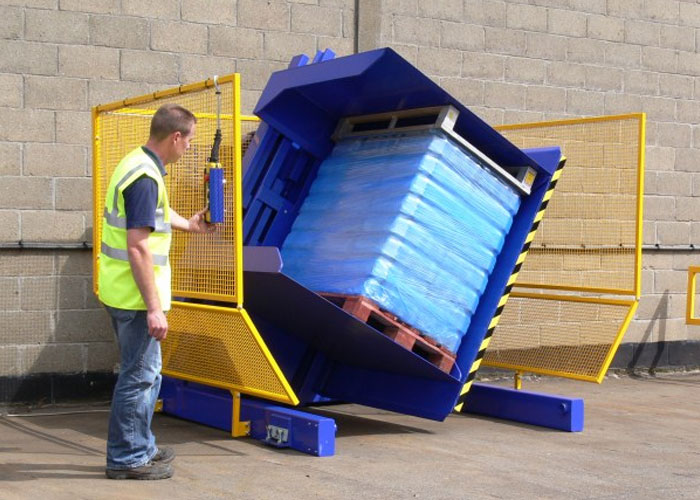
This decision is more than just a simple equipment purchase. It is a strategic investment in your supply chain's efficiency and resilience. Making the right choice means smoother operations, safer workplaces, and a stronger competitive edge. But how do you cut through the technical jargon and sales pitches to find the machine that truly fits your needs? I have been in the packaging machine industry for my entire career, first as an engineer and now as a factory owner. I want to share what I have learned to help you make an informed decision. Let’s break down the essential factors.
What are the key differences between US and EU pallet standards that necessitate an inverter?
Your logistics manager tells you a shipment is on hold. The reason? The pallets from your supplier will not fit in your warehouse racking. This small detail brings a part of your operation to a standstill. You are losing precious time and money because of incompatible pieces of wood. This constant friction is a hidden tax on your business, and it is entirely avoidable. The first step to solving this is to understand the core problem: the fundamental differences between pallet types.
The primary reason a pallet inverter is necessary for international trade is that US and EU pallets have different dimensions, construction, and entry points for handling equipment. A standard North American GMA pallet (48" x 40") will not fit in European racking systems or trucks designed for the common EUR-pallet (1200mm x 800mm). This incompatibility forces a manual, inefficient, and often unsafe transfer of goods unless an automated solution like a pallet inverter is used.
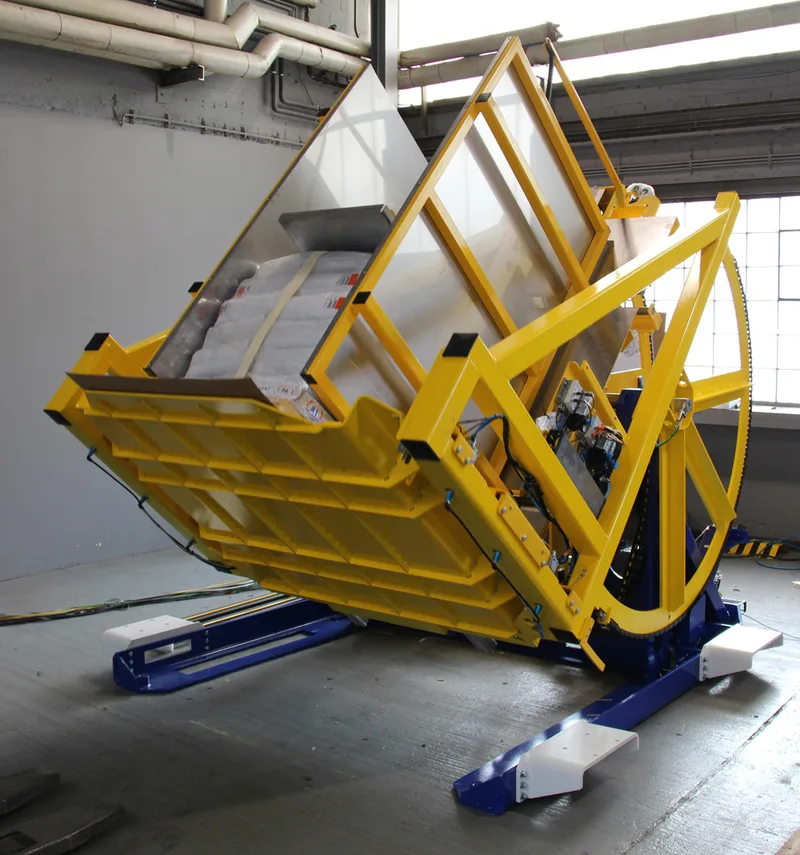
Deeper Dive: The Real-World Impact of Pallet Incompatibility
The differences seem small on paper, but in a high-volume facility, they create massive bottlenecks. As an engineer, I always focus on the practical consequences of design choices. The choice of a pallet is a perfect example of how a simple standard can have far-reaching effects on an entire supply chain. It's not just about the size; it's about how that size and design interact with every piece of equipment in your facility.
Dimensional and Structural Clashes
Let's get specific. The most common pallet in the US is the Grocery Manufacturers' Association (GMA) pallet. In Europe, it's the EUR 1 or EPAL 1. Their differences are critical for anyone in the logistics business, especially for a CEO like Javier Morales who oversees a massive operation.
| Feature | US (GMA) Pallet | EU (EUR/EPAL) Pallet | Impact on Operations |
|---|---|---|---|
| Dimensions | 48" x 40" (1219mm x 1016mm) | 1200mm x 800mm (47.2" x 31.5") | US pallets are wider and don't fit well in standard European trucks or sea containers, leading to wasted space and higher shipping costs per unit. |
| Construction | Stringer (wood boards between decks) | Block (9 blocks of solid wood or composite) | This is a major point. Stringer pallets typically only allow 2-way forklift entry. Block pallets allow 4-way entry, offering much more flexibility for loading, unloading, and warehouse positioning. |
| Wood Treatment | Often requires heat treatment or fumigation (ISPM 15 stamp) for export. | Usually compliant with ISPM 15 by default within the EPAL system. | Using the wrong pallet can lead to shipments being quarantined or rejected at customs, causing huge delays and potential fines. |
For a steel plant handling heavy, valuable products, these differences are not trivial. Imagine a forklift operator trying to quickly move a load on a stringer pallet from the side. They can't. They must reposition the forklift, wasting time and increasing the risk of accidents. In a facility aiming for 95% equipment uptime, these small inefficiencies add up to significant lost productivity.
The Financial Drain of Incompatibility
The costs go far beyond wasted time. An owner like Javier, who scrutinizes every investment, needs to see the full financial picture. The lack of a proper pallet switching system results in tangible and intangible losses. Tangible costs include the labor for manually moving goods from one pallet to another, which is slow and requires multiple staff members. There is also the direct cost of product damage, which is almost inevitable during manual handling. Intangible costs are just as damaging. These include the risk of worker injury from repetitive lifting, the cost of shipment delays that harm customer relationships, and the inefficient use of warehouse space because you must create large, messy staging areas for restacking. A pallet inverter directly addresses all these issues, turning a major cost center into an efficient, streamlined process.
How do you evaluate the ROI of a pallet inverter for cross-border shipping?
You are looking at a quotation for a pallet inverter. The number is significant. It is easy to see it as a major capital expense and put the decision on hold. But this is a mistake I have seen many business owners make. They focus only on the upfront cost. They fail to calculate the daily cost of not having the machine. What if that "expense" could pay for itself in 18, 12, or even 9 months by eliminating hidden costs you are already paying every single day?
To properly evaluate the Return on Investment (ROI) for a pallet inverter, you must first calculate the total annual cost of your current pallet-handling method. This includes direct labor costs for manual restacking, the financial value of goods damaged during the process, and any associated costs like workplace injuries or shipment delays. You then compare this total annual expense to the one-time purchase price of the inverter. The savings generated by the machine will reveal a clear payback period, turning the purchase from an expense into a measurable, profit-driving investment.
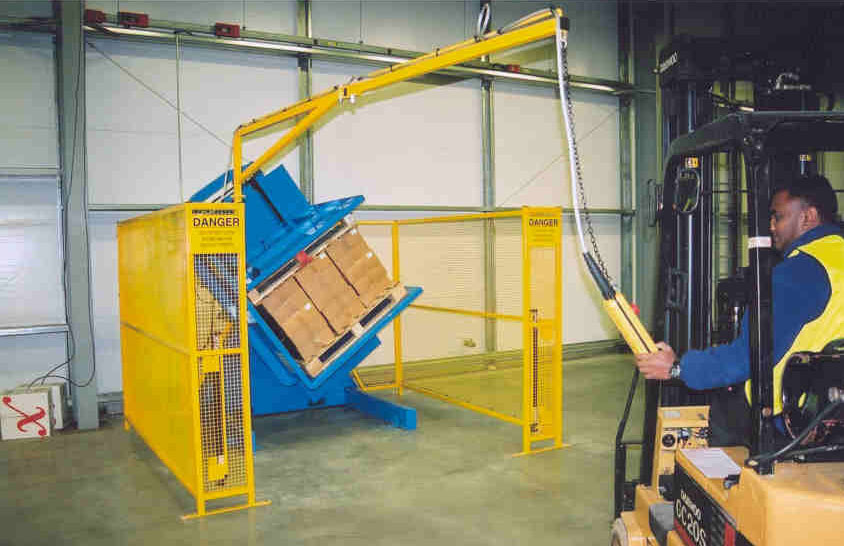
Deeper Dive: A Practical Framework for Calculating Your ROI
As a factory owner, I live by the numbers. Every equipment proposal that crosses my desk must have a clear ROI calculation. It is the only way to separate a "nice-to-have" gadget from a strategic asset that directly supports our goals, like reducing operational costs by 8% or more. Let's build a simple framework that someone like Javier can take to his finance team.
Step 1: Quantify Your Current Costs (The "As-Is" Scenario)
You need to be honest and thorough here. These are real costs draining your budget right now.
- Labor Cost: How many employees does it take to transfer one pallet load? Let's say it's 2 people. How long does it take them? Let's say 15 minutes (0.25 hours). What is your fully-burdened hourly labor rate (wages + benefits)? Let's use $25/hour. If you transfer 40 pallets per day:
- Calculation: 2 employees x 0.25 hours/pallet x 40 pallets/day x $25/hour = $500 per day.
- Annual Labor Cost: $500/day x 250 workdays = $125,000 per year.
- Product Damage Cost: What percentage of goods are damaged during this manual transfer? Even a conservative 1% can be huge. If the average value of a pallet load is $5,000:
- Calculation: 40 pallets/day x $5,000/pallet x 1% damage rate = $2,000 per day.
- Annual Damage Cost: $2,000/day x 250 workdays = $500,000 per year.
- This number might seem high, but for valuable goods, it is realistic. Adjust it for your specific products. For a steel plant, even minor cosmetic damage to finished products can lead to rejection or rework.
- Other Costs: This includes potential for worker injury claims, the cost of expedited shipping to make up for delays, and the inefficient use of forklifts that could be doing other work. Let's estimate this at a conservative $10,000 per year.
Total Annual "As-Is" Cost: $125,000 + $500,000 + $10,000 = $635,000
Step 2: Project Your Future Savings (The "To-Be" Scenario with an Inverter)
Now, let's see how a pallet inverter changes the equation.
- New Labor Cost: An inverter requires only one operator. The cycle time is about 2 minutes (0.033 hours).
- Calculation: 1 employee x 0.033 hours/pallet x 40 pallets/day x $25/hour = $33 per day.
- New Annual Labor Cost: $33/day x 250 workdays = $8,250 per year.
- New Damage Cost: The controlled, gentle clamping of a pallet inverter virtually eliminates handling damage. Let's say the damage rate drops to 0.05%.
- New Annual Damage Cost: $25,000 per year.
- Payback Calculation:
- Total Annual Savings: $635,000 (Old Cost) - ($8,250 + $25,000) (New Cost) = $601,750
- If a suitable pallet inverter costs $50,000:
- Payback Period: $50,000 / $601,750 per year = 0.083 years, or just over 1 month.
Even if your numbers are ten times smaller, the payback period is often less than a year. Presenting the data this way transforms the conversation from "Can we afford this machine?" to "How quickly can we get this machine installed?"
Which technical specifications matter most when choosing a pallet inverter for high-volume operations?
You have approved the budget. You are convinced of the ROI. Now your engineering team is looking at different models. One is cheaper but uses a simpler hydraulic system. Another is more expensive but has a faster cycle time and better safety features. It is easy to get lost in the details. But for a high-volume, high-stakes environment like a steel mill or a busy Canadian distribution center, choosing the wrong technical specifications can lead to a machine that becomes the new bottleneck, or worse, a safety hazard.
For high-volume operations, the most critical technical specifications are load capacity, the adjustability and design of the clamping system, the machine's cycle time, and the overall build quality. You must ensure the capacity safely exceeds your heaviest load. The clamps must be powerful enough to secure the load during inversion but gentle enough to prevent product damage. Finally, the machine's steel frame, hydraulics, and electrical components must be robust enough for continuous, reliable use to meet demanding throughput targets.
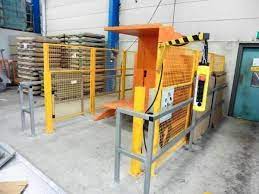
Deeper Dive: An Engineer's Guide to Pallet Inverter Specs
From my years designing and building these machines, I can tell you that the details on the spec sheet are what separate a workhorse from a problem child. For a business leader like Javier, understanding these key points ensures he can have a productive conversation with his engineering team and potential suppliers. He doesn't need to be a hydraulics expert, but he needs to know the right questions to ask.
Capacity, Clamping, and Control
This is the heart of the machine. It's a delicate balance.
- Load Capacity: This seems obvious, but it's not just about the maximum weight. You should look for a machine with a capacity at least 25% higher than your heaviest pallet load. This provides a safety margin and reduces strain on the hydraulic system and frame, leading to a longer service life. For a steel plant moving parts or coils, a 1500kg or 2000kg capacity is a standard requirement.
- Clamping Mechanism: Look for a machine with two moving clamping tables. Cheaper models sometimes have one fixed platform and one moving clamp. This design puts uneven pressure on the load and can be less stable. Dual moving clamps center the load and apply pressure more evenly.
- Adjustable Clamping Pressure: This is non-negotiable for anyone handling a variety of products. A steel coil needs high pressure. A pallet of cardboard boxes needs very low pressure. A good machine will have an easily adjustable pressure gauge. The best systems have multiple pre-set pressure settings that an operator can select with the push of a button, reducing the chance of human error. Ask the supplier: "How precisely can we control the clamping pressure?"
Cycle Time and Automation Level
In a high-volume operation, speed is money.
- Cycle Time: This is the time it takes to load, invert, and unload a pallet. A typical free-standing 180-degree inverter has a cycle time of 60-90 seconds. Faster, more automated inline systems can be much quicker but require more integration. Your goal of 95% equipment uptime means you need a machine that can keep pace with your production line without fail.
- Level of Automation: Do you need a simple, forklift-loaded machine, or a fully automated one that integrates with conveyors? A standalone unit offers flexibility. An integrated system offers maximum throughput and reduces labor to nearly zero. For a facility pursuing a digital transformation, a machine with PLC controls (like Siemens or Allen-Bradley) that can communicate with a Manufacturing Execution System (MES) is a must. This allows for production tracking and performance visualization, aligning perfectly with Javier's goals.
Build Quality and Reliability
This is where I get passionate. A machine's longevity comes from what it's made of. This is especially true when dealing with aging equipment challenges.
- Frame and Steel: Ask about the thickness of the steel used in the frame. A heavy-duty, welded steel frame is essential for durability and safety.
- Hydraulics and Electrics: Look for brand-name components. A machine that uses Rexroth or Parker hydraulics and Schneider or Siemens electricals is built with quality parts. These are easier to service and find replacements for anywhere in the world, including Canada and Mexico. This is a crucial detail for ensuring long-term reliability and minimizing downtime.
What level of support should you expect from a pallet inverter supplier beyond the sale?
The new pallet inverter is on your factory floor. It works perfectly. The installation team leaves, and you feel good about your purchase. Six months later, a hydraulic hose bursts on a Friday afternoon, right in the middle of a critical shipment. Your maintenance team does not have the right part. You call the supplier's main number and get an answering machine. Suddenly, your efficient new machine is a 2-ton piece of useless steel, and your production schedule is in jeopardy. The initial price of the machine seems irrelevant now.
Beyond the initial sale, you should expect a supplier to be a true partner. This means they must provide comprehensive on-site installation and operator training, maintain a local or regional inventory of critical spare parts, and offer responsive, expert technical support. A great partner will also provide proactive advice on maintenance schedules and potential upgrades, helping you maximize the machine's lifespan and performance. Their job isn't done when the check clears; it's done when you are consistently meeting your operational goals.
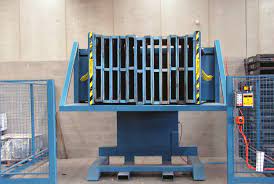
Deeper Dive: Defining a True Strategic Partnership
I built my company, SHJLPACK, on the principle of being a total solution provider. This philosophy was born from my own frustrating experiences as a young engineer dealing with unresponsive suppliers. A machine is a tool, but the support system around that tool is what delivers long-term value. For a leader like Javier, who is looking for strategic partners to help with challenges like aging equipment and digital transformation, the supplier's service level is just as important as the machine's technical specs.
The Pillars of Excellent After-Sales Support
Here is what a true partnership looks like in practice. This is the standard you should hold any potential supplier to.
- Installation and Training: A quality supplier doesn't just drop the machine at your loading dock. Their technicians should come to your site. They should handle the full installation, commissioning, and testing. Most importantly, they must provide thorough training for both your operators and your maintenance staff. Operators need to learn safe and efficient operation. Your maintenance team needs to learn basic troubleshooting, preventive maintenance routines, and how to identify parts that are nearing the end of their service life. This knowledge transfer is critical for achieving that 95% uptime goal.
- Spare Parts and Technical Response: Downtime is the enemy of profitability. Ask potential suppliers hard questions:
- "Do you keep spare parts in North America?" Waiting for a part to ship from Asia or Europe can take weeks. A supplier with a parts depot in Canada, the US, or even Mexico can get you a part in 24-48 hours.
- "What is your guaranteed technical support response time?" You need a phone number you can call and speak to an expert, not a call center.
- "Do your machines have remote diagnostic capabilities?" Modern PLCs allow a technician to log in remotely to diagnose a problem. This can solve 80% of software or sensor issues in minutes, without the cost or delay of a site visit.
Beyond Fixing Problems: A Partner in Your Goals
The best suppliers move from a reactive "break-fix" model to a proactive partnership. They should understand your business goals. For Javier, this means the supplier should be able to discuss how their equipment can support his key objectives.
- Digital Transformation: Can the pallet inverter be equipped with IoT sensors to track usage, cycle times, and energy consumption? Can this data be fed into your MES or big data platform for analysis? A forward-thinking supplier will have answers to these questions. They will help you make the machine a data-gathering node in your smart factory.
- Reducing Energy Costs: Can the supplier advise on the most energy-efficient hydraulic pumps or motor options? Can they provide data on the machine's power consumption per cycle? This information directly supports the goal of lowering unit energy costs.
- Predictive Maintenance: A good partner will help you set up a predictive maintenance schedule based on your usage. They will tell you, "Based on running 40 cycles a day, you should inspect the clamp pads every 6 months and replace the main hydraulic filter every 12 months." This proactive approach prevents the failures that cause unexpected downtime. This is the kind of partnership that builds trust and delivers value for years to come.
My Insights: Beyond the Machine - A Partnership Approach to Pallet Switching
I remember a time, early on after I started my own factory, when I made a decision I still think about today. We needed a new piece of equipment, and I looked at two quotes. One was 20% cheaper than the other. To my younger self, focused on saving every dollar, the choice seemed obvious. I bought the cheaper machine. It turned out to be one of the most expensive mistakes I ever made. It broke down constantly. The supplier was on the other side of the world, and getting support was a nightmare. The downtime cost us a major contract.
That experience was painful, but it taught me a fundamental lesson that became the cornerstone of SHJLPACK: you are not just buying a machine. You are buying a result. You are buying uptime. You are buying reliability, safety, and the peace of mind that comes from knowing you have a partner you can count on. The real value is not in the steel and motors; it is in the total solution that solves your business problem.
This is why our slogan is "TOTAL SOLUTION FOR WRAPPING MACHINE" and why our mission is to be a knowledge-sharing platform. When I talk with business owners like Javier Morales, I don't just hear about the need for a pallet inverter. I hear the challenges behind that need: the pressure to reduce costs, the frustration of equipment failures, and the ambition to build a modern, efficient, and profitable operation.
A piece of equipment is only one part of the answer. The complete answer—the total solution—involves understanding the unique demands of your products, integrating the machine seamlessly into your workflow, training your people to use it effectively, and providing unwavering support for its entire lifecycle.
My journey from a factory engineer to a business owner was possible because of the opportunities this industry gave me. Now, my goal is to give back. I want to share my knowledge and my mistakes so that others can succeed. Choosing a pallet inverter isn't about the machine's features alone. It is about finding a partner who is as invested in your success as you are. It is about building a relationship that helps you solve today's challenges and seize tomorrow's opportunities.
Conclusion
Choosing the right pallet inverter is a strategic decision that boosts efficiency, safety, and your bottom line. Focus on the total solution and a supportive partnership, not just the machine.




